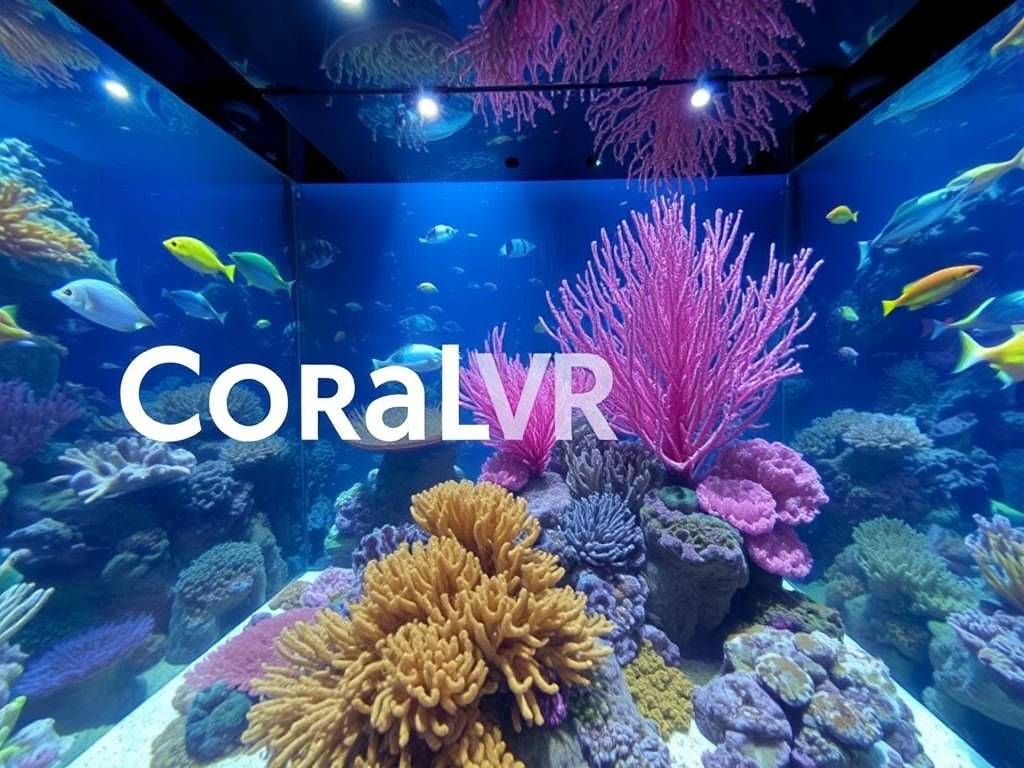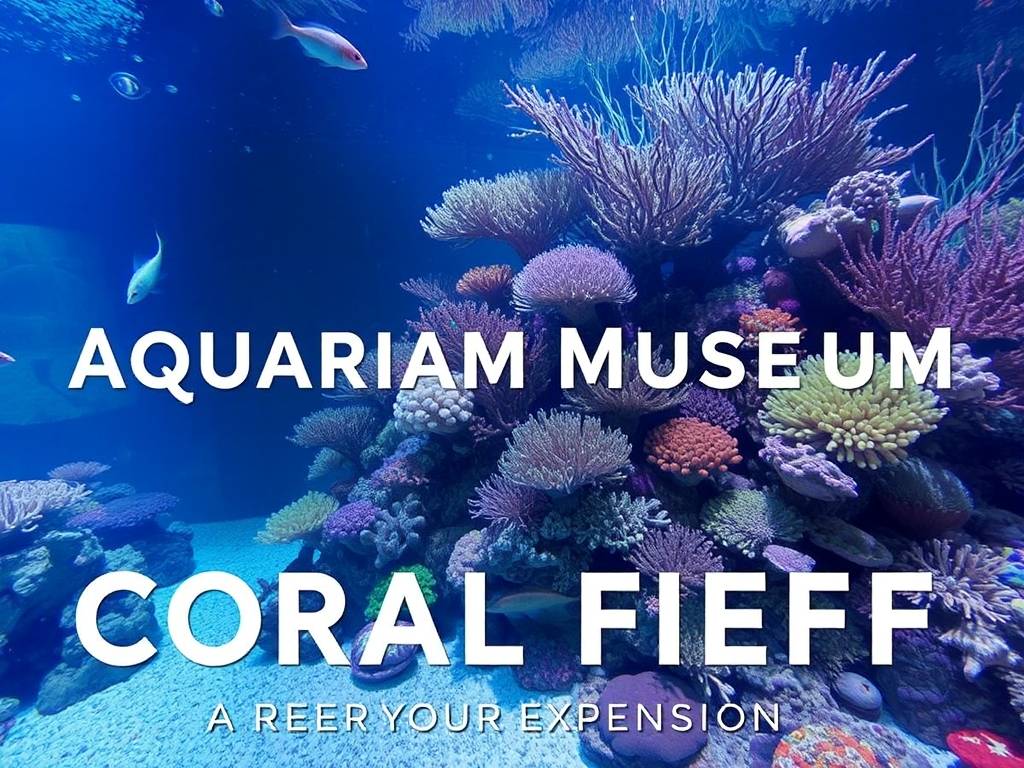Dive Deeper: How the Aquarium Museum VR's Coral Reefs Expansion is Revolutionizing Ocean Conservation
Imagine standing on the ocean floor, surrounded by a silent, swirling ballet of color. A parrotfish nibbles on a piece of coral just an arm’s length away, its scales shimmering in the dappled sunlight filtering through the water. A school of iridescent blue tangs flows around you like a living river, and in the distance, the gentle giant of the reef, a manta ray, glides effortlessly through the blue expanse. This isn't a dream, nor is it a scene from a documentary. This is the immersive, heart-pounding reality offered by the Aquarium Museum VR and its groundbreaking new Coral Reefs Expansion.
For too long, our connection to the world's coral reefs has been two-dimensional—confined to screens and pages. We hear the alarming headlines about coral bleaching events and the devastating impact of ocean acidification, but these concepts can feel abstract and distant. The Aquarium Museum VR Coral Reefs Expansion shatters that distance. It doesn't just show you the reef; it makes you a part of it, fostering a profound, emotional understanding that is the first and most crucial step toward meaningful marine ecosystem conservation.

From Spectator to Citizen Scientist: An Unforgettable Virtual Dive

The moment you activate the Coral Reefs Expansion, the transformation is breathtaking. The virtual aquarium experience evolves from a contained tank into a vast, living seascape. The core technology of the Aquarium Museum VR—hailed as a pinnacle of interactive marine biology education—is supercharged here. The haptic feedback in your controllers simulates the gentle push of water currents. Spatial audio allows you to pinpoint the crackle of a snapping shrimp or the distant song of a humpback whale. This is not a passive ride; it's an immersive educational simulation that empowers you to explore at your own pace.
The expansion is meticulously designed around several key virtual reality marine ecosystems, each telling a different part of the coral reef story. You can start in the "Reef Builder's Garden," where you witness the slow, majestic growth of staghorn and brain corals, learning about the symbiotic relationship with the photosynthetic algae, zooxanthellae, that gives them their color and life. This is where the abstract concept of coral bleaching becomes viscerally clear. With a toggle of a timeline slider, you can fast-forward to see the same vibrant reef, now under thermal stress, turn a ghostly, stark white. The silence that often accompanies this visual change is more powerful than any lecture.
But the experience doesn't stop at showcasing the problems. The heart of this VR coral reef exploration is its interactive "Citizen Science" mode. Here, you are equipped with a virtual slate and data tools. Your mission might be to conduct a fish population survey, identifying and counting different species to contribute to a global dataset. Or you might be tasked with assessing coral health, identifying early signs of disease or predation by crown-of-thorns starfish. This interactive marine biology education component transforms the experience from a game into a genuine tool for public engagement in oceanography. You are no longer just learning; you are doing, and in doing so, you internalize the complexity and fragility of this ecosystem.
Connecting the Dots: Climate Action and Reef Survival
A common question for anyone concerned about reefs is, "What can I possibly do from hundreds of miles away?" The Aquarium Museum VR brilliantly bridges this gap. One of its most acclaimed modules, "The Carbon Connection," is a masterclass in educational family VR content. In this module, you witness the journey of a carbon dioxide molecule from a car's tailpipe in a bustling city, through the atmosphere, and finally, as it dissolves into the ocean, triggering a chemical reaction that leads to ocean acidification.
You then see this process from the perspective of a young coral polyp trying to build its calcium carbonate skeleton in the increasingly acidic water. The skeleton literally becomes more translucent and fragile in front of your eyes. This direct, cause-and-effect visualization makes the link between our daily carbon footprint and the survival of coral reefs undeniable. It’s a powerful piece of digital conservation technology that makes the global local, the invisible visible. It answers the "why should I care?" question with an experience that is felt, not just heard.
A Living Library for the Curious Mind
Beyond the guided narratives and citizen science missions, the Coral Reefs Expansion serves as a dynamic, living encyclopedia. By using a simple gaze-and-hold mechanic, you can "focus" on any species—from the tiniest cleaner shrimp to the most imposing moray eel—and pull up a detailed entry from an integrated marine wildlife digital archive. These entries include information on the species' role in the ecosystem, its conservation status, and even its cultural significance to coastal communities.
This feature makes it an invaluable resource for accessible oceanography learning for all ages. A child can delight in learning the name of the "Dory" fish, while a university student can study the intricacies of its mating behaviors. This transforms a casual VR underwater ecosystem tour into a deep, self-directed learning journey, satisfying curiosity at every level and fostering a sense of wonder that is essential for long-term marine ecosystem conservation.
The Future of Exploration is Here
The Aquarium Museum VR's Coral Reefs Expansion is more than just an add-on; it's a paradigm shift. It represents the future of immersive museum technology, where the barriers of geography, cost, and physical ability are dissolved. It allows someone in a landlocked city to develop the same passion for the ocean as someone who grew up by the shore. It provides a safe, repeatable, and deeply engaging platform for educational family VR content that can spark dinner table conversations about sustainability.
By combining cutting-edge virtual reality marine ecosystems with robust scientific data and a compelling narrative, this expansion does what traditional media cannot: it creates empathy through experience. It doesn't just inform you that the reefs are in trouble; it makes you feel their beauty, understand their complexity, and comprehend the urgency of their plight. It is a powerful testament to how digital conservation technology can be harnessed to inspire the next generation of ocean advocates, one unforgettable virtual dive at a time. So, put on your headset and take the plunge. The reef is waiting, and it has a story to tell.
















